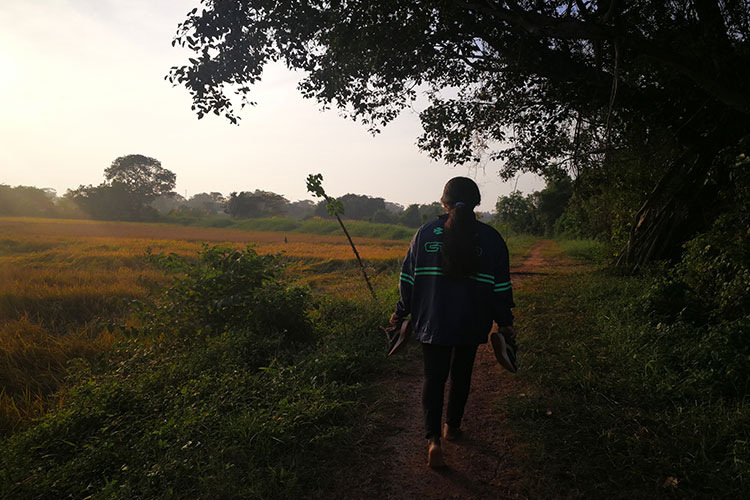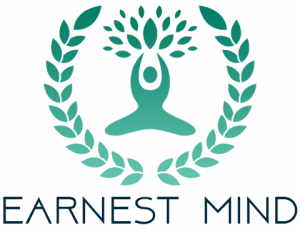Have you ever gone barefoot in public? Probably you feel shy and feel unhygienic to do so. I had to be unshod on two occasions when my pair of shoes were broken and I still remember how awkward I felt.
Wearing shoes is a social norm started about 40,000 years ago. Today shoes have become one of the fashion icons which exhibits social status of a person. Therefore, we wear shoes wherever we go.
This article is not to rationalize wearing or not wearing shoes. Instead, it discusses about how you can use the emerging health trend called “grounding” for walking meditation.
Contents
What is grounding?
Earthing or grounding means to be in direct contact with the earth. It encourages to walk without shoes receiving the electron charges stored in the earth. Studies have shown that the electrons in the earth helps reducing certain illnesses in the human body such as inflammation.

The electromagnetic pollution taking place in this era positively charges the cells of the human body unnecessarily. Thus, you need to ground them and receive energy from the earth to restore your health.
Barefoot stories
Most of us have the habit of wearing slippers as soon as we are out of bed in the morning. Since then we spend the entire day wearing shoes chronically. Though certain weather conditions do not allow to be unshod, you can find a few moments to take off your tight shoes and feel relaxed.
Walking without shoes is a normal practice you can see in some countries. In Asian countries, it is customary to take off shoes when you enter a home or a sacred place. Shoes considered to be impure since we wear them outside. Also, it shows disrespect when we wear shoes in certain places.
This custom has evolved through a religious aspect as well. For example, Hindus take off shoes and clean their feet before entering a Hindu temple. Buddhist monks go on alms round barefooted.
Meditative barefoot walk is the practice known to meditators from ancient time. The Buddha travelled barefoot through different parts of India. The great Indian social activist, Mahatma Gandhi was barefooted too.
What is walking meditation?
Walking meditation is a tool to make the everyday action of walking into a deliberate movement. Here, you can use a specific walkway or any secluded place to practice walking meditation. When you practice regularly, the mind gets concentrated.
For more information, read Walking Meditation for Beginners: Tips to start,
How to start a barefoot meditative walk?
For this purpose, you need an area which is free from obstacles. A sandy path of about 30 feet or a grassy area is preferable.
Instead, try a meditative walk on the beach in a sunny evening. Probably this would be a new practice if you have not tried barefoot walking meditation.
Let us get started and be prepared for the challenge.
- Take off your shoes
- Stand still on the starting point.
- Take a few deep breaths to relax yourself
- Place hands in front of you or beside the body
- Bring your awareness to the feet area
- Lift your right foot knowing you are lifting the right foot
- Move it forward knowing you are moving forward
- Place the right foot on the ground knowing you are placing it on the ground
- Now repeat the same process with your left foot
- Once you reach the turnaround point, be aware of the fact you are turning around
- Start over
- Do not pay any attention on the sounds around you or objects around you
- Continue practising for about 10-15 minutes or even longer!
What are the benefits of walking barefoot?
Walking barefoot on a sand path has a lot of health benefits. In meditation centres and Buddhist temples, there are walkways especially made for walking meditation.
Also walking barefoot has a lot of advantages such as;
- Provides a time to ground yourself to the earth
- Gives better control of your leg movement
- Provides an opportunity to be away from tight shoes
- Strengthen your leg muscles
- Offers a time to be sensitive to the sensations of your feet
How long should you ground?
You need to give enough time for the body to absorb the energy from the earth. Therefore, 20-30 minutes would be ideal.
What are the potential risks of barefoot walk?
Before start practising, make sure the walkway is free from any hazards such as sharp objects. Usually, it is pretty safe to walk barefoot on a walkway familiar to you.
If you are concerned about exposing your feet to the ground, it is better to wear light slippers or socks for walking meditation.
My experience in grounding
After watching The Earthing movie, I was eager to experiment grounding in my morning walk. It is a beautiful path surrounded by paddy fields and a river. The fresh air energizes the whole body. I walk about 45 minutes most of the days.
Here is my discovery. When I walk without shoes, I am aware of the sensations on the feet. My walking track has a lot of pebbles on it, so my mind cannot go on a rollercoaster of emotions. Also I do not feel drowsy especially after lunch. I get a sound sleep and wake up in the morning afresh.
However, when we wear shoes, there is a comfortable memory foam layer between the earth and our feet. So walking becomes a robotic act and the mind gets busy with talking.
When I had a conversation with a Buddhist monk who goes on alms round with bare feet, he said after the morning alms round session, he feels very energetic and fresh. So my discovery was approved by another practitioner.
The bottom line
In a society where there is little space for getting closer with the nature, grounding is still a new area to do further research. Nevertheless, barefoot walking meditation has been the practice known to those who walked on the spiritual path from a long time. It is your opportunity to experience the difference and make your lifestyle free of tight shoes at least for a few seconds.
